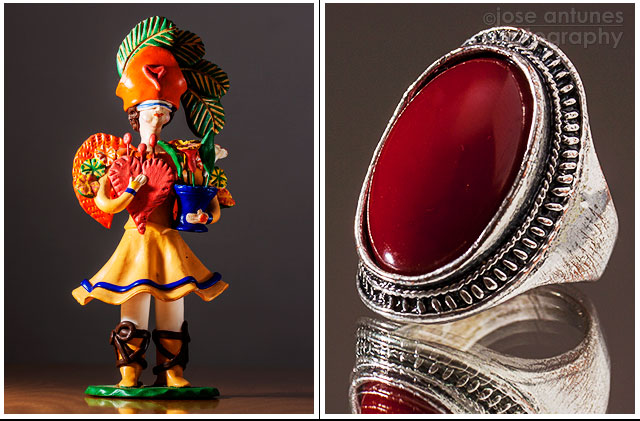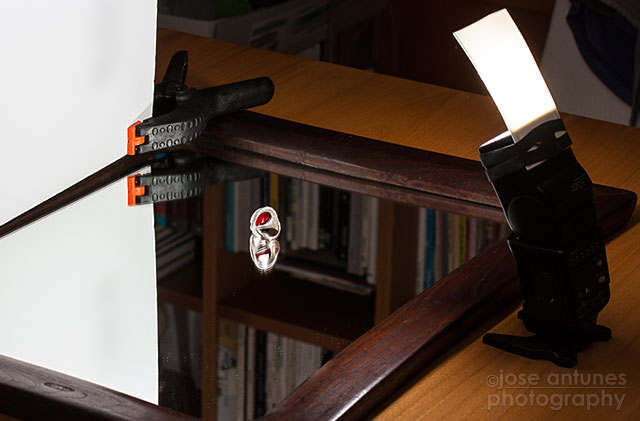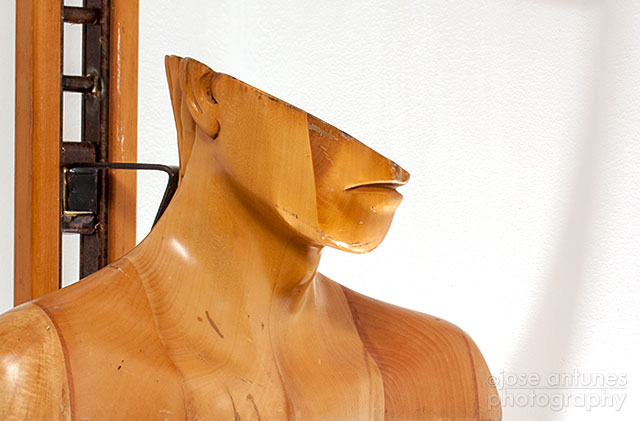Reflectors are the simplest way to soften, diffuse or redirect light. You may not think about it, but there are reflectors all around us, from the clouds in the sky to a model's white shirt. We've assembled a list of reflectors you can have for free, or almost. And they might already be in your home!

Examples of the use of reflectors. Kitchen foil was used for the left image and a wall mirror and white cardboard were used for the ring picture.
For this series of examples I used flash to shoot a series of situations you might find yourself in. But the same applies to natural light coming through a window. You just have to figure out where to position your subject, the reflector and yourself.
1. The Walls and Ceiling
If you're using flash inside and have a low white ceiling, use it as a reflector. It works perfectly. But also remember to use the walls around you. And if you need to shoot a group of people and have a white wall right on your back, try to turn the flash 180 degrees towards the back, and shoot it at full power, to get a big reflector that softens the light on your group picture.
2. A White Sheet
Either with a flash or with natural light, you can always use a white sheet as a reflector. Place your subject close to a window, hang the sheet on the opposite side, and you have soft light with less contrast between light and shadow.
3. A Small Mirror
Small mirrors are also useful to photograph small subjects. Mirrors are great to reflect light or redirect sun rays. Remember that white sheets and walls diffuse as well as reflect light, they spread light out. A mirror just reflects, so it can be used to create small pools of more direct light on subject objects.
 A small mirror (1), a metallic card holder (2) I use to carry some colour gels, a white plastic hand fan (3), a small plastic mirror-like surface (4) and a Tupperware lid (5) are some of the reflectors I use with small subjects on my table top studio photography.
A small mirror (1), a metallic card holder (2) I use to carry some colour gels, a white plastic hand fan (3), a small plastic mirror-like surface (4) and a Tupperware lid (5) are some of the reflectors I use with small subjects on my table top studio photography.4. A Wall Mirror
A big mirror is also a good reflector, besides being a good base to photograph things like jewelry. It reflects light and it doubles the image of the object for some interesting compositions.

A wall mirror or any big mirror you can use as a base for photographing small objects is a good choice. It does more than reflect light.
5. Kitchen Foil
The metallic look of kitchen foil is not always the best option for some types of photography. When used flat, it acts a little like a mirror, but when slight crumpled it produces a very specific look. You can use it for small and big subjects, but you may find it clashing with certain moods. It's worth trying out either way!
6. A White Shirt
A friend with a white shirt can also become a reflector. You just have to ask him to move to the right position and angle. If you have your subject wear a white shirt, it can help fill in shadows under the chin.
7. White Cardboard or Paper
A single piece of paper can be used as a reflector if you have nothing else around. The same applies to white cardboard. You'll be amazed at what can be achieved with some patience and a few sheets of paper around your subject.
8. A Tupperware Lid
My most used small reflector is a rectangular piece of plastic I cut from the white lid of a Tupperware container. The "Tupperware Reflector" is both used to direct light when I photograph small subjects, like flowers, for example, or as a flash reflector, with a rubber band holding it in place, as can be seen in the photographs.
How Reflectors Work
So, now you know you have reflectors sitting all over your house. It's time to test them out and explore other solutions you have at home.
Reflectors are easy to use. You point light at them and light bounces at the same angle in the opposite direction. Once you understand this, you're ready to use reflectors to amp up your photography.















